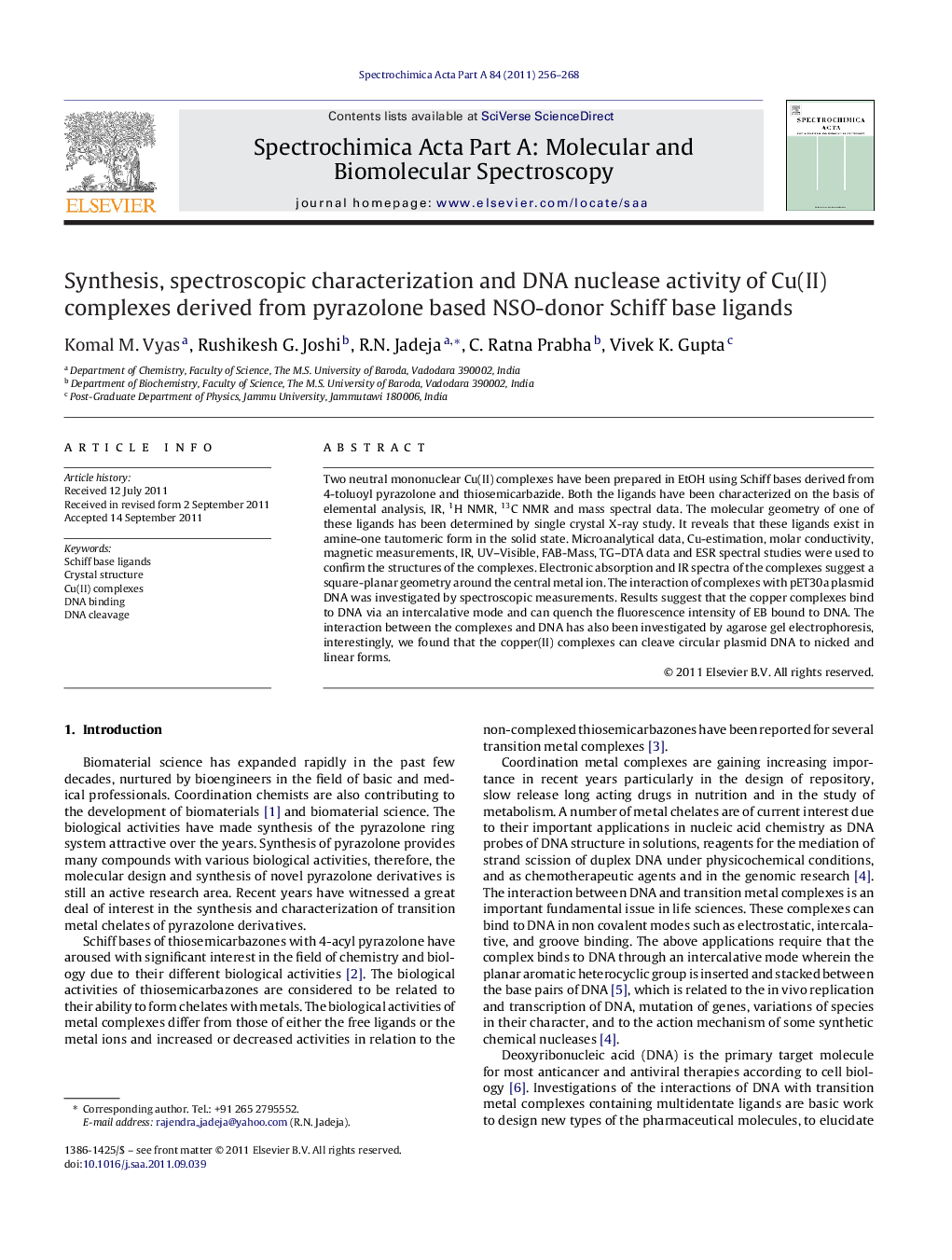| Article ID | Journal | Published Year | Pages | File Type |
|---|---|---|---|---|
| 1234899 | Spectrochimica Acta Part A: Molecular and Biomolecular Spectroscopy | 2011 | 13 Pages |
Two neutral mononuclear Cu(II) complexes have been prepared in EtOH using Schiff bases derived from 4-toluoyl pyrazolone and thiosemicarbazide. Both the ligands have been characterized on the basis of elemental analysis, IR, 1H NMR, 13C NMR and mass spectral data. The molecular geometry of one of these ligands has been determined by single crystal X-ray study. It reveals that these ligands exist in amine-one tautomeric form in the solid state. Microanalytical data, Cu-estimation, molar conductivity, magnetic measurements, IR, UV–Visible, FAB-Mass, TG–DTA data and ESR spectral studies were used to confirm the structures of the complexes. Electronic absorption and IR spectra of the complexes suggest a square-planar geometry around the central metal ion. The interaction of complexes with pET30a plasmid DNA was investigated by spectroscopic measurements. Results suggest that the copper complexes bind to DNA via an intercalative mode and can quench the fluorescence intensity of EB bound to DNA. The interaction between the complexes and DNA has also been investigated by agarose gel electrophoresis, interestingly, we found that the copper(II) complexes can cleave circular plasmid DNA to nicked and linear forms.
Graphical abstractCu(II) complexes of Thio-Schiff bases have been synthesized and characterized using different techniques. The interaction of the complexes with DNA gives interesting results and the complexes also have ability to cleave DNA.Figure optionsDownload full-size imageDownload as PowerPoint slideHighlights► Two Cu(II) complex bases have been synthesized and characterized using different techniques. ► The molecular geometry of one of these ligands has been determined by single crystal X-ray study. ► The interaction of complexes with DNA was investigated by spectroscopic and viscometric methods. ► The DNA cleavage of the complexes has also been investigated by submarine gel electrophoresis.
